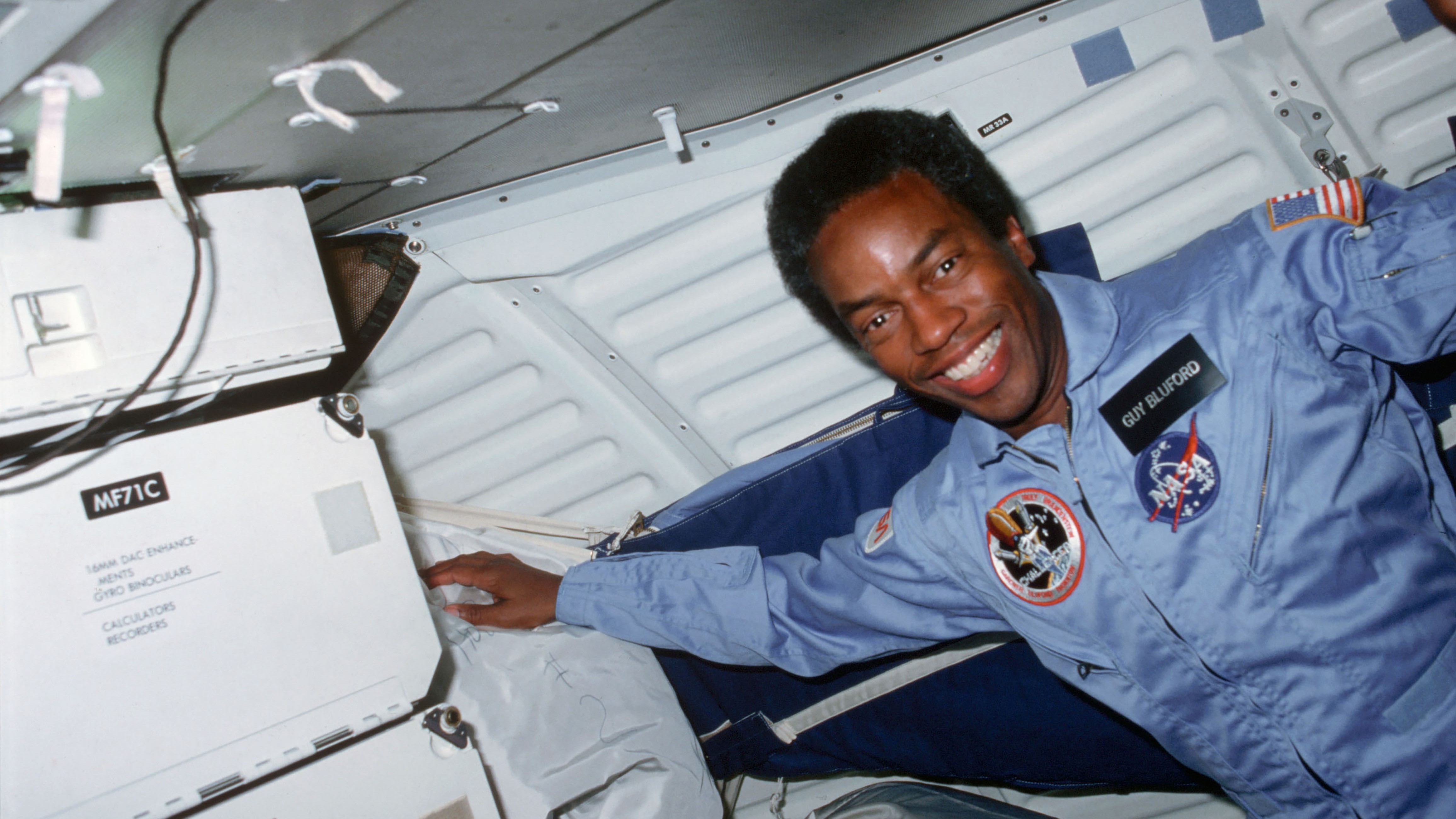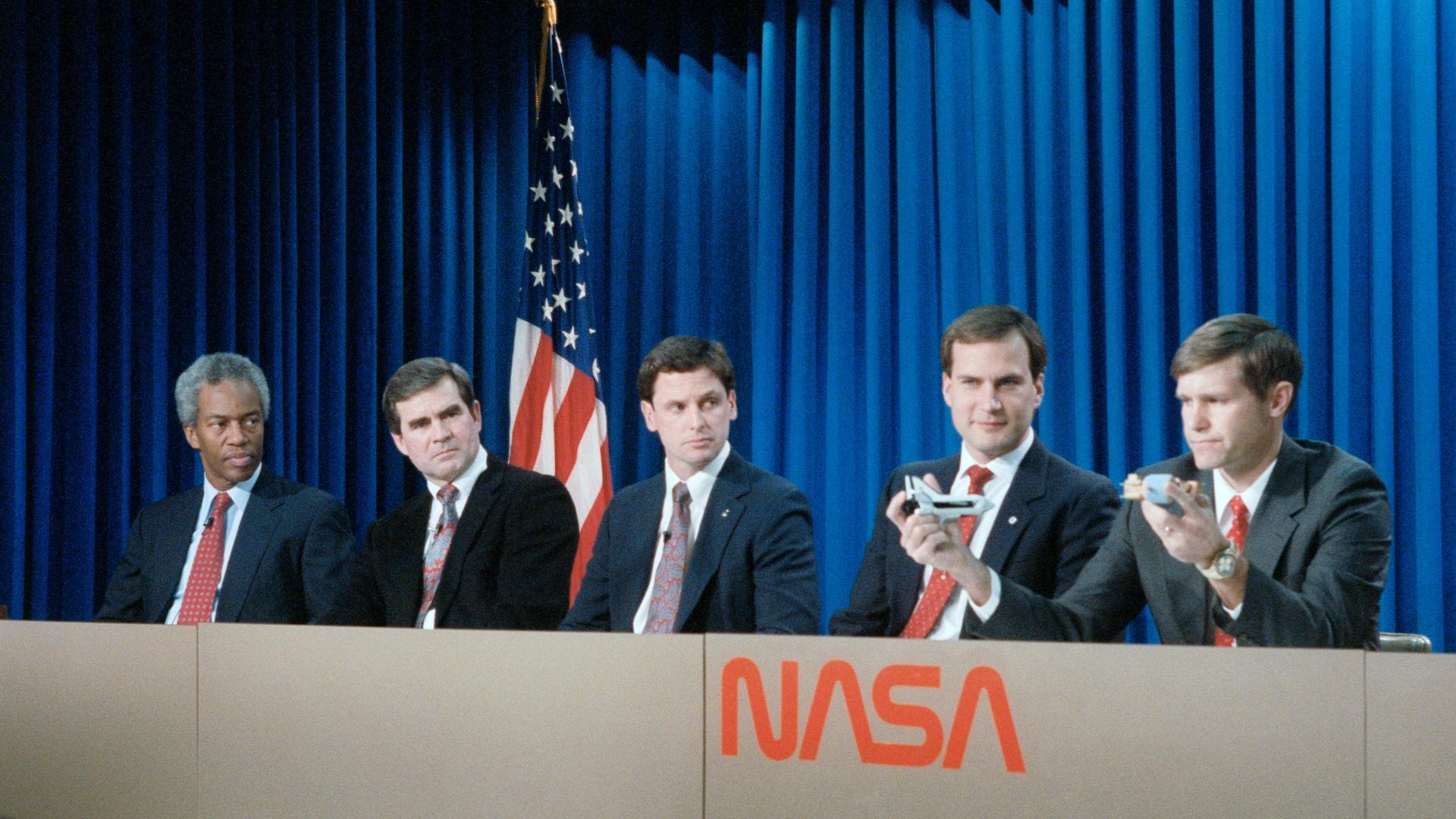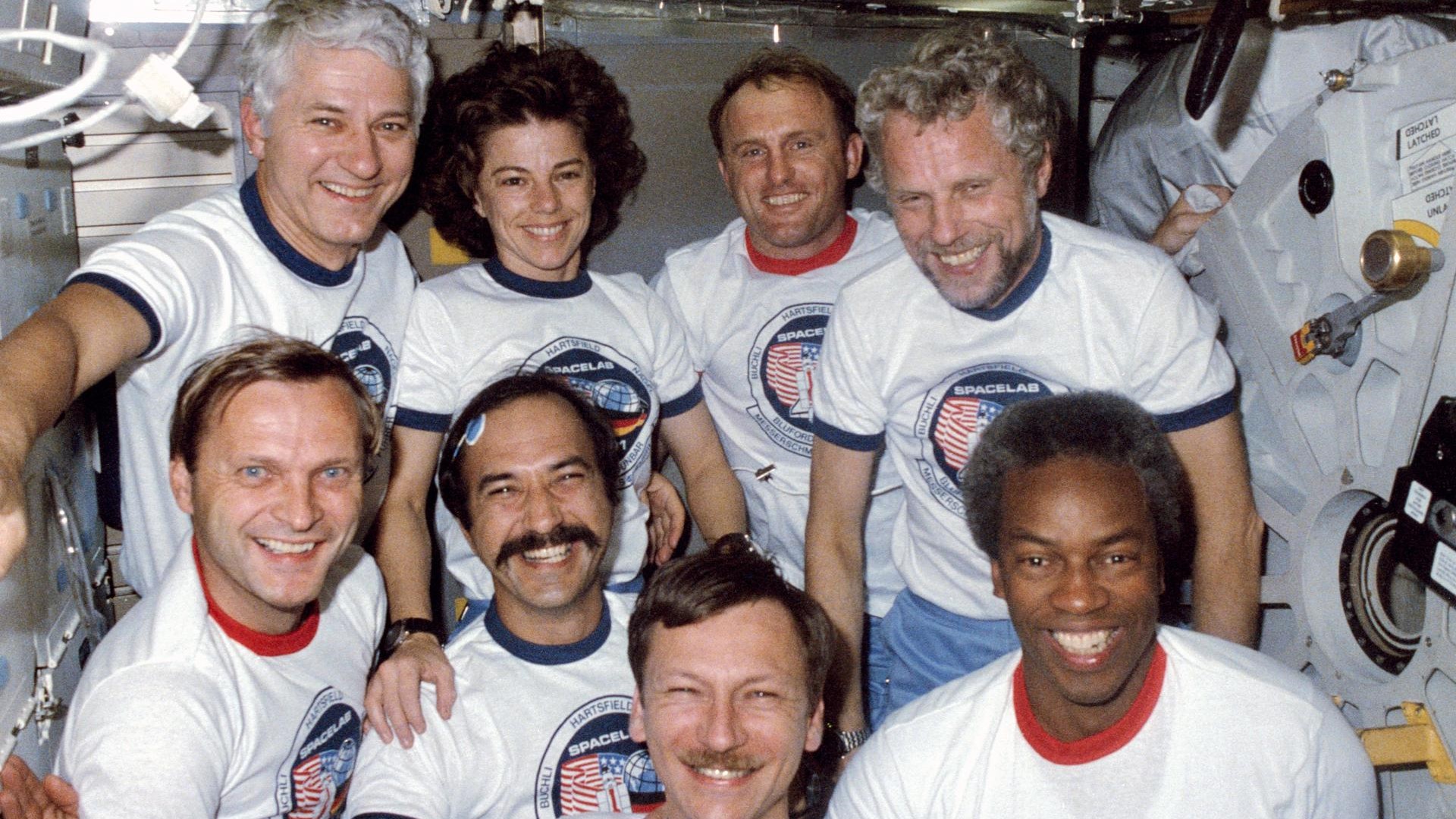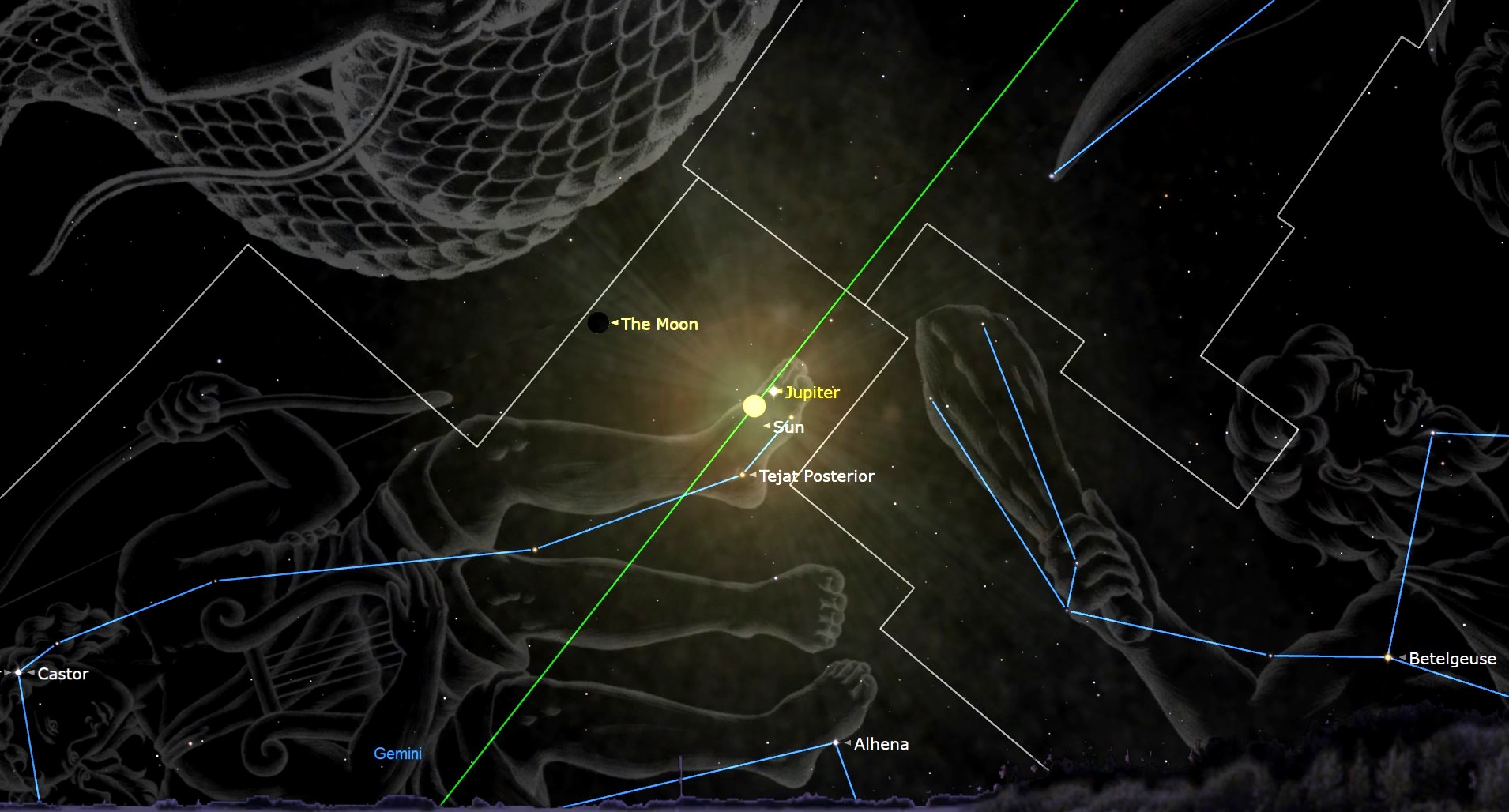Guion Bluford: First African-American in space
Guion "Guy" Bluford is a former NASA astronaut who was the first African-American to fly into space. He flew four shuttle missions.

Guion "Guy" Bluford is a former NASA astronaut who was the first African-American to fly into space. He flew four space shuttle missions.
Bluford's class of 1978 astronauts included two other African-Americans: Ron McNair (who later died on the space shuttle Challenger in 1986) and Fred Gregory (who after flying in space, went on to become a NASA deputy administrator.)
"All of us knew that one of us would eventually step into that role," Bluford later told NASA about being the first. "I probably told people that I would probably prefer not being in that role ... because I figured being the No. 2 guy would probably be a lot more fun."
Personal life
Bluford, born on November 22, 1942, in Philadelphia, Pennsylvania, graduated from Overbrook High School in 1960. He earned a bachelor's degree in aerospace engineering from Penn State in 1964, followed by a master's and a PhD in aerospace engineering, with a focus on laser physics, from the Air Force Institute of Technology in 1974 and 1978, respectively. Later, he completed an MBA at the University of Houston–Clear Lake in 1987. Bluford also attended the Wharton School of Business at the University of Pennsylvania.
According to NASA Blueford also attended the University of Pennsylvania, Wharton School of Business.
First flight
Bluford's first flight — STS-8 aboard Challenger — soared into space on a rainy August morning in 1983. Thirty years later, Bluford joked he was surprised anyone bothered to show up given the terrible weather.
"People came from all over to watch this launch because I was flying," Bluford said in a 2013 interview with NASA. "I imagined them, all standing out there at 1:00 in the morning with their umbrellas, all asking the same question, 'Why am I standing here?' "
Launch, however, was a memorable moment. The crew listened to the audio of the ascent after they returned to Earth and discovered that somebody was laughing as they went into space.
"We listened to it for quite a while to try and figure out who that was, only to come to the conclusion that it was me. I mean, I laughed and giggled all the way up. It was such a fun ride," Bluford added.
Bluford deployed the Indian National Satellite (INSAT-1B) while in orbit. Other activities of the STS-8 crew included putting the Canadarm robotic arm through its paces and several experiments to see how space affects the human body, among other milestones. The shuttle landed safely on Sept. 5, 1983. Bluford, however, was just getting started.
Subsequent missions

In the next decade, Bluford flew three more times as a mission specialist aboard NASA space shuttles. His next mission — STS-61A, also aboard Challenger, in late 1985 — was so packed with things to do that Bluford's shift often needed help from other crew members to fix meals. The eight crewmembers were doing the first Spacelab mission, which was partially run under the German Space Operations Center — another first for NASA.

"After the mission, [the Germans] invited us and our wives to Germany to attend a technical conference highlighting the results of our mission," Bluford recalled in a 2004 oral interview.
"It was a proud moment for all of us as we learned the results of some of the experiments that we performed during flight. The trip also gave me an opportunity to tour Europe with the wife and show her some of the sights that I had seen while training there."
Final flight and retirement
Flights were interrupted after the Challenger explosion of 1986, and resumed in 1988. Bluford was next assigned to STS-39, aboard Discovery, in 1991, but a herniated disc just four months before the original March launch date (later pushed to April) threatened his status on board.
"The NASA flight surgeons grounded me and indicated that I would need an operation to correct the problem," Bluford recalled. "There was some concern from the training folks that I might not be able to complete the training syllabus in time for the flight. [Commander] Mike Coats altered some of the responsibilities on the crew so that I could be operated on and still make the flight."
Bluford indeed made it, taking part in a mission that "gathered aurora, Earth-limb, celestial, and shuttle environment data with the AFP-675 payload," among other tasks, NASA stated in his biography.
Bluford's last flight in December 1992 was primarily to release a classified payload for the Department of Defense. The U.S. government initially directed DOD to put more of its satellites on the space shuttle, but that changed after the Challenger explosion. DOD, however, still had a few flights left on the manifest — with STS-53, aboard Discovery — representing the last one.
After landing, Bluford said he "had to seriously decide" what to do next, and felt it was time to leave the astronaut corps. He accepted a job offer in the private sector but maintained some ties to the space program. Notably, he worked with the Columbia Accident Investigation Board which examined the fatal breakup of space shuttle Columbia in 2003.
Join our Space Forums to keep talking space on the latest missions, night sky and more! And if you have a news tip, correction or comment, let us know at: community@space.com.
Breaking space news, the latest updates on rocket launches, skywatching events and more!

Elizabeth Howell (she/her), Ph.D., was a staff writer in the spaceflight channel between 2022 and 2024 specializing in Canadian space news. She was contributing writer for Space.com for 10 years from 2012 to 2024. Elizabeth's reporting includes multiple exclusives with the White House, leading world coverage about a lost-and-found space tomato on the International Space Station, witnessing five human spaceflight launches on two continents, flying parabolic, working inside a spacesuit, and participating in a simulated Mars mission. Her latest book, "Why Am I Taller?" (ECW Press, 2022) is co-written with astronaut Dave Williams.
- Daisy DobrijevicReference Editor
